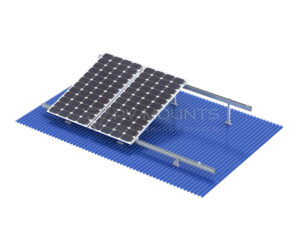Agrivoltaic systems, sometimes termed agrovoltaics, signify a futuristic synergy between agriculture and solar power generation. Strategically incorporating solar panels within agricultural land not only boosts clean energy production but also optimizes farm productivity. In this in-depth exploration, we delve into the intricacies of agrivoltaic systems, elucidating their significance, functioning, and advantages.
Table of Contents
Understanding Agrivoltaic Systems
Agrivoltaic systems essentially merge the dual objectives of solar energy generation and agriculture within a shared space. Instead of relegating vast expanses of land solely for solar panel installations, agrivoltaics ensures that land continues to serve its agricultural purpose while also generating electricity.
Components and Structure
At the heart of agrivoltaic systems lie two principal components:
- Solar panels:
They are primarily affixed to raised mounting structures designed to efficiently harness sunlight for electricity generation. These structures are strategically engineered to elevate the panels while ensuring they pose minimal obstruction or shade to the crops growing underneath, thereby optimizing both energy and agricultural yields. - Solar Panel Mount Structures
structures are frameworks that support and position solar panels, ensuring optimal sunlight exposure. Made from materials like aluminum or steel, they come in various designs, including fixed, adjustable, and tracking systems, each catering to different environmental conditions and efficiency needs. Their robustness ensures panel stability and longevity. - Crops:
Strategically cultivated beneath or interspersed among solar panel setups, reap multiple advantages. The controlled sunlight exposure, due to the panel’s partial shading, often leads to optimal growth conditions. Moreover, the moderated microclimate created can enhance crop health and potentially increase yield.

Key Benefits of Agrivoltaic Approaches
Enhanced Land Utilization
Agrivoltaic systems merge solar energy generation with agriculture, maximizing land efficiency. By utilizing the same plot for dual purposes, they exemplify sustainable land management. As available land diminishes globally, the importance of such integrated approaches that harness this dual-functionality grows exponentially in sustainable development discussions.
Improved Crop Yields
Certain crops flourish under diffused sunlight. The shade provided by solar panels offers a protective barrier, shielding sensitive plants from intense sunlight. This controlled environment can optimize growth conditions and boost overall crop production and quality.
Water Conservation
Solar panels provide beneficial shading, reducing soil moisture loss and promoting water retention. In areas prone to drought or limited water availability, this is vital. By preserving soil hydration, it aids in not just conserving water but also fostering robust crop development under adverse weather conditions.
Economic Viability
Farmers can diversify their income sources, receiving revenues from both agricultural produce and leasing land for solar installations or even selling the generated electricity.
Incorporating Agrivoltaic Designs in Farming
Implementing agrivoltaic systems requires meticulous planning. Here’s a concise guide:
Site Assessment
Prior to installation, a thorough assessment of the site is imperative, focusing on factors like sunlight availability, soil health, and land contours. These elements determine the potential efficiency and success of the agrivoltaic system.
Selection of Compatible Crops
Certain crops are better suited for agrivoltaic setups. It’s pivotal to select varieties that flourish in diffused sunlight and have compatible water requirements, ensuring harmonious growth alongside neighboring plantations. This optimizes both energy and agricultural outputs.
Efficient Solar Panel Arrangement
Solar panels must be positioned with precision, balancing their orientation to optimize sunlight absorption while preventing over-shading of crops. This careful placement guarantees efficient energy production and supports healthy crop growth concurrently.
Future Prospects and Challenges
As the world pivots towards sustainable solutions, agrivoltaic systems present immense promise. While challenges like initial setup costs or potential land degradation exist, the myriad benefits they offer in terms of land optimization, energy generation, and farming make them a compelling choice for forward-thinking societies.

To ensure agrivoltaics’ continued growth, stakeholders must engage in collaborative research, develop innovative design solutions, and work towards making these systems more accessible and efficient.
In conclusion, agrivoltaic systems epitomize the harmonious blend of sustainable energy and agriculture. As our world grapples with climate change, resource constraints, and food security, such integrative solutions will undoubtedly play a pivotal role in charting a sustainable future.













